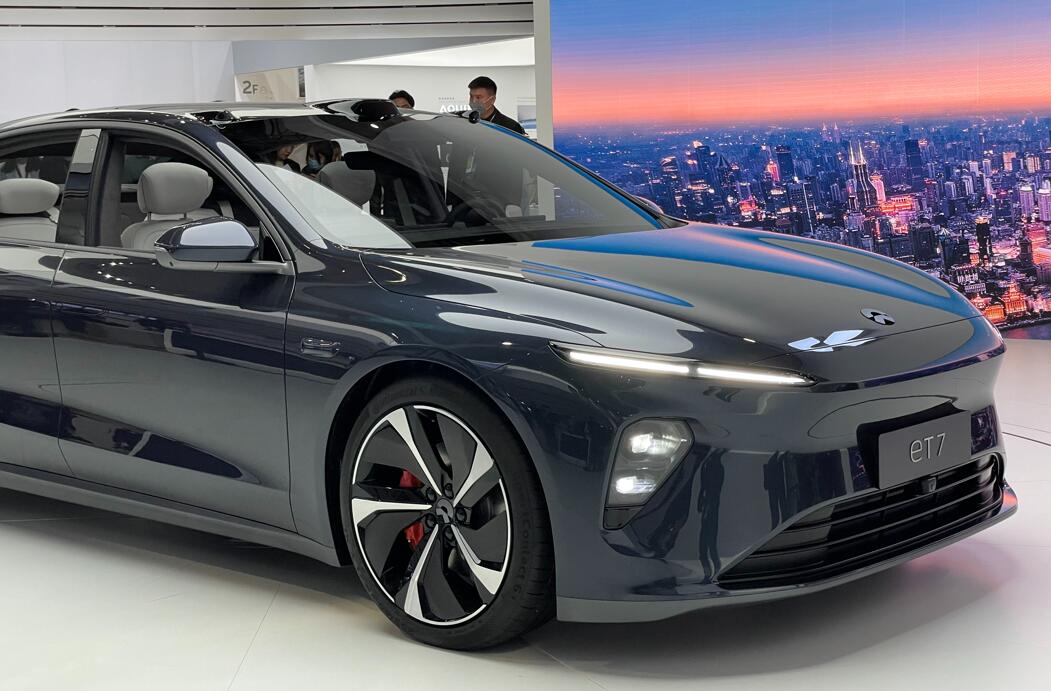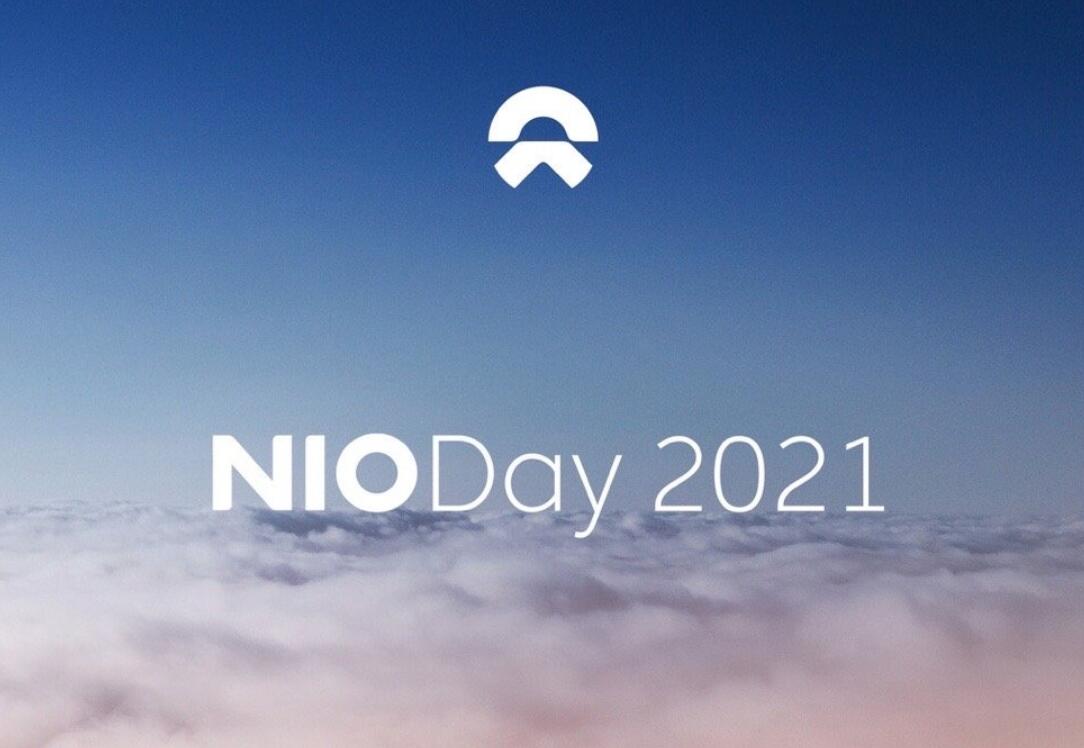Eliminating chip shortage supply chain issues for ET7 will have transformational effects on Nio.
Editor's note: This is a guest post from Rafi Khan, an Nio investor, and does not represent the views of CnEVPost.
If you have ideas you would like to share with our readers, feel free to send them to us. Articles written for the purpose of link building will not be considered and such emails will not be answered.

(Photo source: CnEVPost)
ET7 architecture is based on ADAM Super Computing Platform, Aquila Super Sensing System, Nvidia Orin SOCs (System on Chip), Qualcomm Automotive Snapdragon 5G Digital Cockpit & Nio proprietary algorithms.
1. Nio ADAM Super Computing Platform being installed in ET7 is most powerful computer platform ever installed into an automobile with raw power 7 times TSLA FSD system.
2. Aquila Super Sensing System features watch-tower sensor layout comprising 33 high performing Sensors; 11 high resolution cameras; High Resolution Lidar; 12 Ultrasonic Radars; 5 Wave Radars; 2 High Precision Positioning Units; 1 Vehicle road cooperative perception & 1 enhanced main driver perception hardware.
3. Nvidia Orin SOCs (System on Chip) Each Orin has 254 TOPS power (TOPS is Trillion Operations Per Second). ET7 uses FOUR Nvidia Orin Chips which equals 1016 TOPS -- raw power unheard of in any vehicle until arrival of ET7.
Typically, vehicle functions are controlled by tens of electronic control units distributed throughout a vehicle. By centralizing control of these core domains, Orin can replace these components and simplify what has been an incredibly complex supply chain for automakers.
"The future is one central computer — four domains, virtualized and isolated, architected for functional safety and security, software-defined and upgradeable for the life of the car — in addition to super-smart AI and beautiful graphics," Huang said.
These are NOT my words but those from Nvidia CEO of Huang.
Nvidia Orin can replace these Tens of ECUs in an Auto with One Orin SOC. Next Gen ET7 uses Four Nvidia Orin SOCs.
For ET7 Nio has chosen Nvidia over Intel MobilEye EyeQ5 Chip.
4. Qualcomm Automotive Snapdragon 5G Digital Cockpit provides never before seen Next Gen EV to Cloud, Vehicle to Vehicle, 5G, Infotainment, AI, precision positioning, safety, graphics & connectivity features again replacing multitude of traditional ECUs.
QCOM Snapdragon provides ultimate driving experience.
Here are multiple reasons why I expect ET7 not to have chip supply issues:
- ET7 will use very few chips other than Nvidia Orin & QCOM Snapdragon.
- Nio would have placed Orders for ET7 Chips many months ahead of ET7 production.
- Limited current demand of ET7 Chips. Latest tech automotive chips are typically deployed in Higher Priced Premium Luxury segment making Nio uniquely qualified as buyer for Nvidia & QCOM Chips (Other companies are either NOT in EV Premium Luxury Segment like TSLA Model 3 & Model Y OR do not have large sales numbers in that segment like MB & Audi). Smart Chips need Smart EVs.
- TSLA & BYD are largest EV companies in China & TSLA is crushing all competition in Europe & USA. BYD is proud of its vertical integration so it will not use Nvidia & QCOM Chips. TSLA is using Next Gen Chips on Model S & Model X Infotainment needs but older chips for Model 3 & Model Y which use multiple chips.
- Other EV companies either do not have the sales numbers or sufficiently high sales prices to impact demand of Nvidia & QCOM Next Gen Chips. So competition to Nio ET7 for Nvidia & QCOM latest chips is currently limited. Nio is constantly striving for 5 Star User Experience & one wonders whether other EV companies not using Next Gen Chips on Next Gen Power Train can attain such a User Experience.
- TSLA & BYD Annual R&D Expenses are $1.6 Billion & 1 Billion respectively on all aspects of their business. Nvidia & QCOM Annual R&D expenses are $3.9 Billion & $6.9 Billion solely on Chips. So decide which company's automotive chips is more likely to provide 5 Star User Experience.
- Plethora of EVs from BYD, XPEV, Li, SAIC, Geely, TSLA Model 3, Great Wall Motors & even VW sell in the medium price range EV market of below RMB 300,000 & could not afford to use these expensive Nvidia Orin & QCOM Snapdragon Chips (until prices fall) so there may be less initial demand for these chips.
- Both Nvidia & QCOM were happy to promote use of their latest Chips on ET7 so most likely will honor supply commitments
- Biggest current Chip Shortage Problem relates to Old Technology Chips using Older Foundries where Chip Manufacturers are reluctant to expand capacity on those foundries they are typically phasing out -- That is NOT case for ET7 Nvidia & QCOM chips which would be High Cost High Margin Chips using latest foundries & products for which Nvidia & QCOM are actively seeking new customers.
- Nvidia revenues are growing at 68% & QCOM revenues at 50% indicating robust growth suggesting Orders placed well in advance would have excellent chance of being fulfilled.
- On new ET7 EV with huge Pre Orders, Nio would have placed Order of Nvidia & QCOM chips for at least 50,000 Sets of Nvidia & QCOM Chips (my estimate) for ET7 EVs well in advance.
- System Chips (Orin, Snapdragon) minimize Suppy Chain issues for ET7.
Eliminating Chip Shortage Supply Chain issues for ET7 will have transformational effects on Nio.
Recent Weibo Post has suggested December 2021 ET7 Test Drives.
https://m.weibo.cn/status/4684309107575385?
Assume December 2021 for ET7 Test Drive & initiating Mass Production as you will need to have inventory before ET7 launch & January 2022 for initial ET7 Sales (really does NOT matter if you delay all these dates by one or two months core investment thesis is same). Then:
- Nio could produce 20,000 EVs per month from December 2021 delivering only EC6, ES6 & ES8 production in December -- full capacity of JAC Assembly Plant on Double Shift after completion of recent upgrade & addition of 100 more Robots. This production rising to 25,000 in H1 2022.
- Nio would produce as many EC6, ES6 & ES8 for which they could get chips & residual production would be ET7 on which Nio did not have Chip constraints.
- Vehicle Deliveries in January 2022 could be close to 30,000 as Nio in that month delivers both ET7s produced in December 2021 & those produced in January 2022 before reverting back to 20,000 in February 2022 when only that months production would be delivered until completion of NeoPark in H2 2022 when capacity will increase to 50,000 monthly.
- Gross Margins could explode upwards to over 30% from current 20% levels based on both much higher delivery numbers (JAC fixed costs spread over much larger vehicle numbers) PLUS much higher gross margins (over 40% my estimate especially so if you capitalize ADaaS) for ET7.
- Adding ET7 sales for Nio could mean ASP rising to well over RMB500,000 & Profit on Sale of One Nio EV being roughly equivalent to Two TSLA EVs. That suggests Nio Gross Profits on EV Sales could be 40% those of TSLA (Taking TSLA monthly sales in January 2022 at 100,000 & Nio sales being equivalent to 40,000 TSLA Sales based on Nio having Double the Profit. I ignore one off high 30,000 delivery number for January 2022 for Profit comparison purposes). At Market Close Friday Nio was selling at Market Cap. discount of 93% to TSLA.
So Transformational Impact of ET7 to Nio chip shortage issues, Nio Supply Chain issues, Nio profits & margins are evident & all of this is unfolding perhaps within a few weeks with Nio Day & unveiling of 2 New Next Gen Models few weeks after that.
End of Investor Myopia on Nio may be even closer than that. Not all Chinese Stocks are equal & Not all Chinese Policies & Crackdown affect all companies equally -- Languishing Nio Bear has slept long enough for past 8 months.
Not a Financial Advisor Nor Auto Analyst JMHO DYODD



